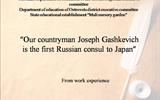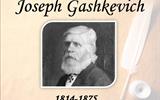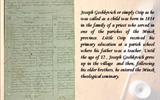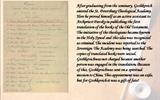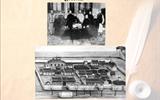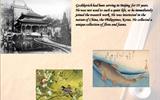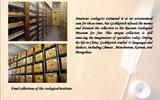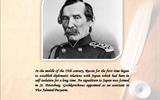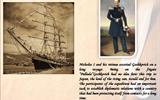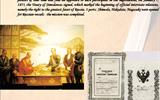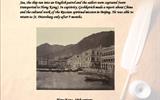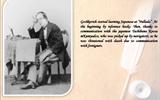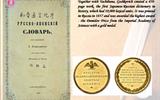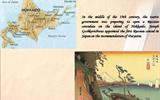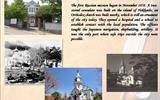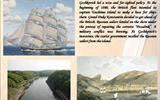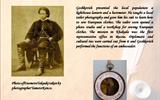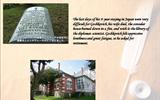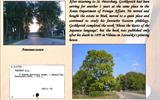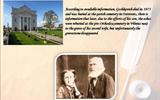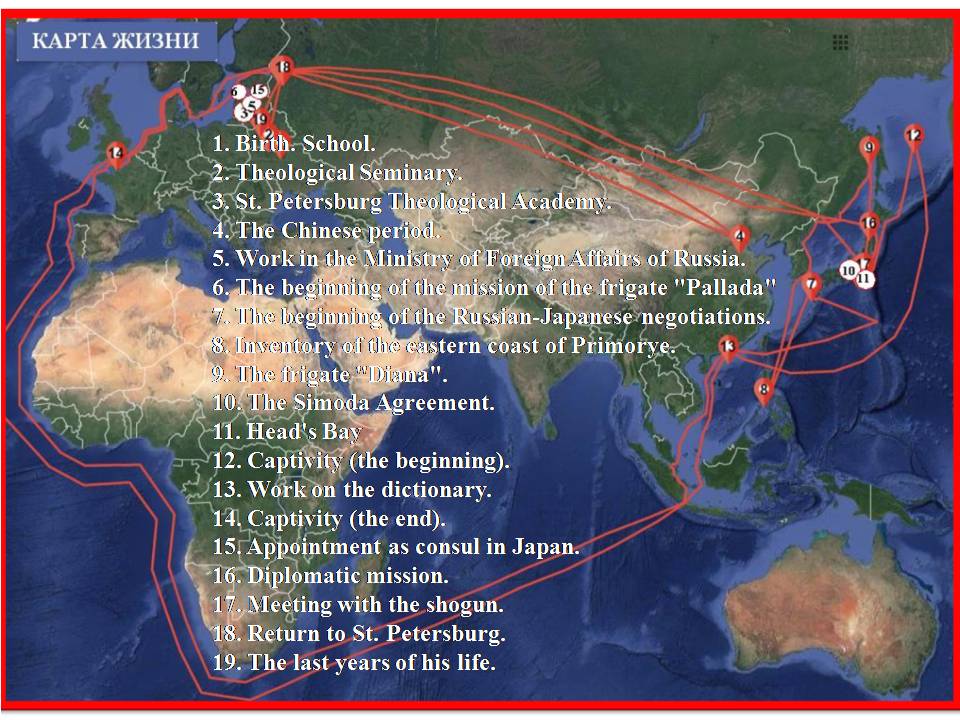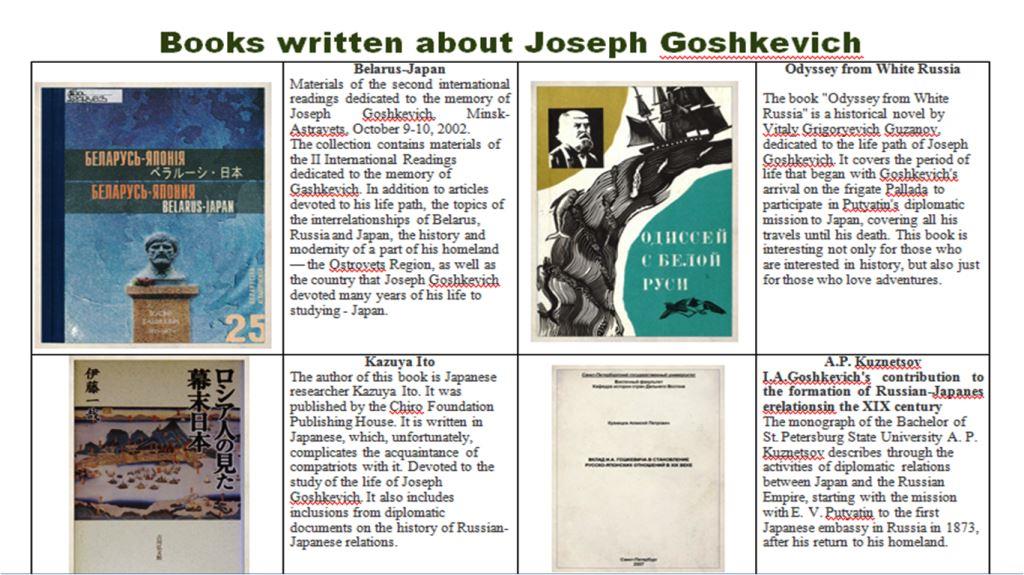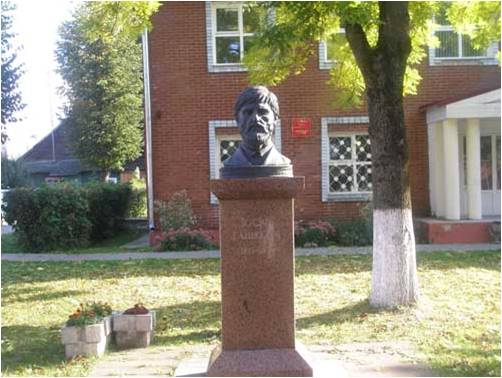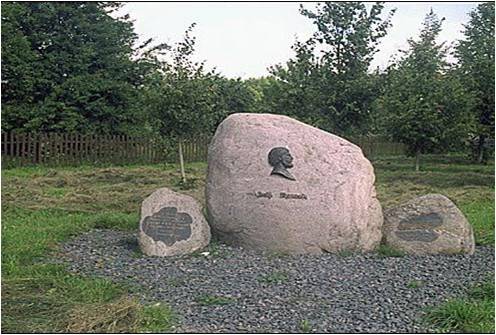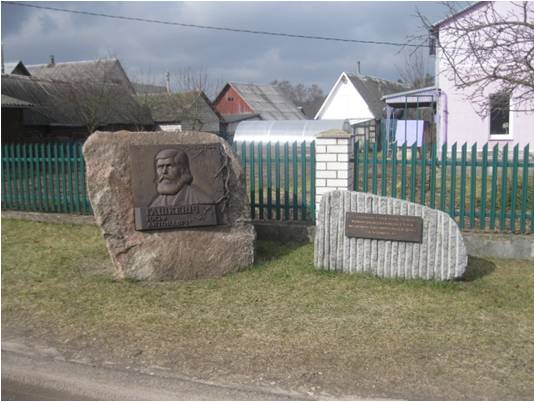The biography of Joseph Goshkevich
 Joseph AntonovichGoshkevich is a state councilor, was born in the village of Strelichev, Rechitsacounty, Minsk province (Gomel region). Father was a village priest Anthony IvanovichGoshkevich, mother was GlikeriaYakovlevna.
Joseph AntonovichGoshkevich is a state councilor, was born in the village of Strelichev, Rechitsacounty, Minsk province (Gomel region). Father was a village priest Anthony IvanovichGoshkevich, mother was GlikeriaYakovlevna.
Russian diplomat, missionary and orientalist, Sinologist and Japanist. The scientist is known as the compiler of the first Japanese-Russian dictionary awarded the medal of the Imperial St. Petersburg Academy. Russian Imperial Consul in Japan. 1858 - winner of the full Demidov Prize and gold medal.
In 1839-1848 he was a member of the Russian Orthodox Ecclesiastical Mission in China, where he studied a number of Oriental languages - Chinese, Manchurian, Korean, Mongolian. Due to his good knowledge of languages, he was invited to work in the Ministry of Foreign Affairs and appointed an official on special assignments of the Asian Department.
In 1852-1855 he served as a translator and adviser in the diplomatic expedition of Vice Admiral, Adjutant General E. V. Putyatin on the military frigate Pallada.
In 1855, he participated in the signing by Putyatin of the first Russian-Japanese diplomatic and trade treaty (the Treaty of Shimoda). According to it, they decided to open the first Russian consulate in the history of Japan in the port of Hakodate on the island of Hokkaido.
On December 21, 1857, by the highest order of the civil department, he was appointed the Russian Imperial Consul in Japan, headed it until 1865. Russian school was opened at the Russian mission, where Japanese children were taught to read and write Russian. During his seven years in Hakodate, I.A. Goshkevich built a consular house, a naval hospital, and an Orthodox church. I.A. Goshkevich taught Japanese people Russian, photography, baking bread, cooking dairy products and pickles, sewing European-cut clothes. The Japanese respected Russians for their selflessness, for their desire to understand local customs and culture.
When he returned to Russia, I.A. Goshkevich continued to serve in the Asian Department, and then retired due to illness. He spent the last years of his life in his estate near Vilna, where he was engaged in scientific work. The scientist is known as the compiler of the first Japanese-Russian dictionary (together with V. I. Matov), awarded the medal of the Imperial St. Petersburg Academy of Sciences and wrote a number of works on the history and culture of China and Japan.
A bay in the Sea of Japan near South Korea is named after the orientalist and diplomat I.A. Goshkevich. A bust of I. A. Goshkevich, donated to the city by sculptor O. Komov, was installed in Hakodate in 1989, and a monument by V. Yanushkevich was erected in his homeland in Ostrovets in Belarus in 1994.
The Institute of Oriental Studies of the Russian Academy of Sciences, St. Petersburg branch, stores the library of Joseph AntonovichGoshkevich. It was bought from the consul's son in 1910. There are 1,346 Japanese woodcuts and old printed books, 47 sheets of geographical maps.
A century later, in August 1994, on the initiative of the local authorities and the Belarusian-Japanese Friendship Society, the I.A. Goshkevich Foundation was established.
The name of Joseph AntonovichGoshkevich, who laid the noble foundation of friendship, mutual knowledge of the Russian and Japanese peoples, is immortalized on the geographical map of the world: a bay in the Sea of Japan is named in his honor.

